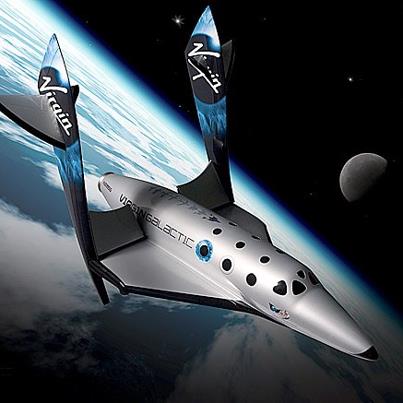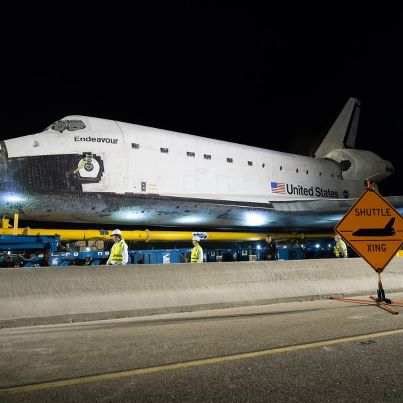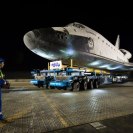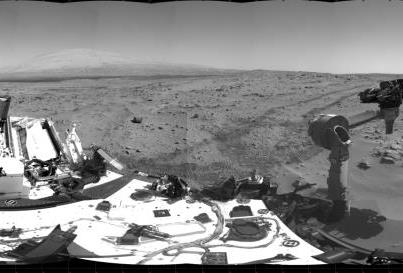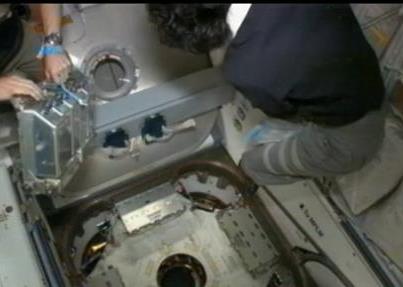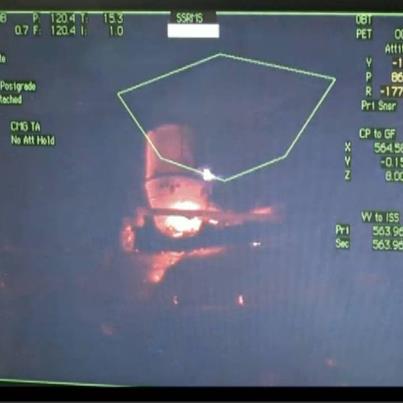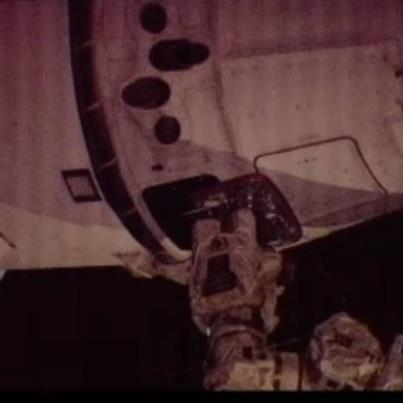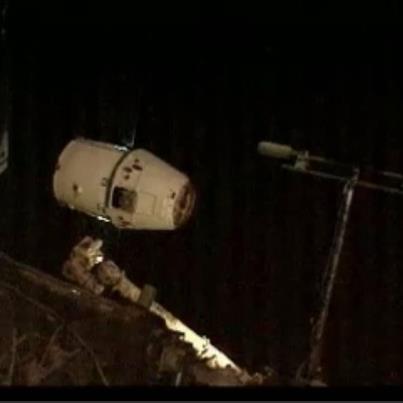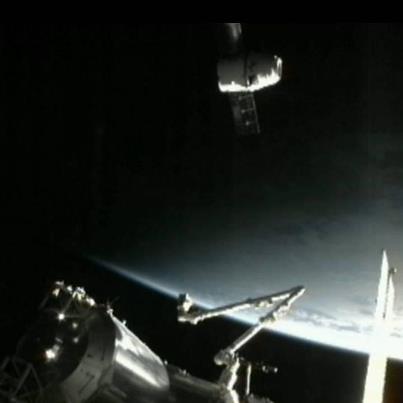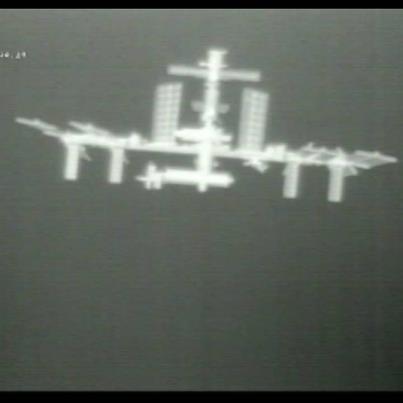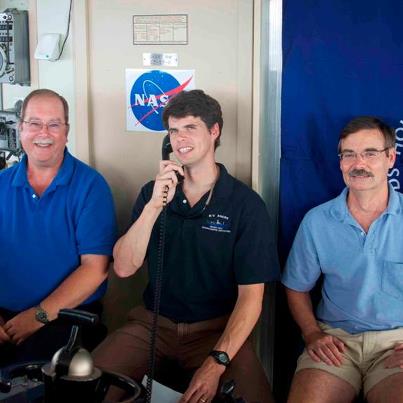
National Aeronautics and Space Administration - NASA1,290,718 likes · 84,253 talking about this
1,290,718 likes · 84,253 talking about this
- Also On
- LikesSee All
- NASA Langley Research CenterGovernment Organization
- NASA's Marshall Space Flight CenterAerospace/Defense
- Jet Propulsion Laboratory (JPL)Government Organization · Technical Institute
- NASA's Glenn Research CenterGovernment Organization
- NASA's John C. Stennis Space CenterProduct/Service
- Ready to Reddit? Join us for a science career "Ask Science" Q&A with JPL climate scientist, Josh Willis, today, Oct 17 at 3 p.m. PT (6 p.m. ET, 2200 UT).
http://www.reddit.com/r/askscience/ - ActivityRecentNational Aeronautics and Space Administration - NASA added a photo from October ...
- nasa.govWatch, download or share the latest NASA videos, including launches and landings, mission operations, science updates and animations.
- Video of the birth, voyage, and slow break up of Greenland's Petermann Ice Island, as seen by NASA satellites. http://go.nasa.gov/OISaY4
- The Expedition 33 crew members living and working aboard the International Space Station made preparations for an upcoming spacewalk and worked with a variety of science experiments Wednesday. Read more at:
http://www.nasa.gov/mission_pages/station/living/index.html - nasa.govNASA scientists are observing Jupiter's appearance – its clouds, belts, hotspots, fireballs – change in unprecedented ways.
- nasa.govIf human beings are ever to fly faster than the speed of sound from one side of the country to another, we first have to figure out how to reduce the level of sonic boom generated by supersonic flight. Earlier this fall, a subscale model of a potential future low-boom supersonic aircraft designed by The Boeing Company...was installed for testing in the 8- by 6-Foot supersonic wind tunnel at NASA's Glenn Research Center in Cleveland. In the photo, Kyle Webster checks that the model is correctly installed. This model, the smaller of two used in the tests, was used to capture measurements of the off-body pressures that create sonic boom. The model is actually upside down. Depending on the type of test and on the tunnel, the model can be oriented either way. Another model built large enough to house a force measurement balance was used to capture force measurements (lift, drag). The tests are among those being conducted by NASA and its partners to identify technologies and designs to achieve a level of sonic boom so low that it barely registers on buildings and people below. › Read More Image credit: NASA/Michelle M. MurphySee More
- Getting ready for a Google+ Hangout with our Antarctic explorers. Starting in a few minutes right here:
http://www.nasa.gov/connect/hangout.html - Got an experiment you want to fly suborbital then apply to NASA's flight opportunities program
The NASA Office of the Chief Technologist (OCT) Flight Opportunities Program intends to mature towards flight readiness status new crosscutting ...technologies that advance or enable multiple future space missions. To facilitate this goal, NASA is providing access to certain flight opportunities available to the Agency, on a no-exchange-of funds basis, to entities that have technology payloads meeting specified criteria.See More
Proposal Schedule for Virgin Galactic Flight Opportunity:
AFO #6 Proposals Due Dec 21, 2012
AFO #6 Selections (tentative) Feb 28, 2013
All details can be found here -
http://nspires.nasaprs.com/external/solicitations/summary.do?method=init&solId=%7B0A6C5D60-20F3-E7FE-D4A3-710AE8AA43B6%7D&path=open - Here's what the Antarctic ice sheet looks like up close. Photo taken from our DC-8 flying science lab this week. For more info about this year's Operation IceBridge mission: http://www.nasa.gov/icebridge
- Have you registered for the NASA Social to celebrate space shuttle Atlantis' final journey to the Kennedy Space Center Visitor Complex? Register now: http://go.nasa.gov/Rixd3p
- [Image of the Day] - Check out today's image in a larger size on NASA's Facebook at: http://go.nasa.gov/image_tab or on NASA.gov at: http://go.nasa.gov/RARnWq
- [Image of the Day] - Check out today's image in a larger size on NASA's Facebook at: http://go.nasa.gov/image_tab or on NASA.gov at: http://go.nasa.gov/RxGPY8
- Watch "This Week @ NASA" to see highlights of NASA's activities, missions, programs, and people. View it now on NASA.gov: http://go.nasa.gov/ODJZw8
- Citizens helped discover a four-star planet system using data from NASA's Kepler spacecraft!
- nasa.govObservations from NASA's WISE all-sky survey reveal new clues about Jovian Trojans, mysterious asteroids that orbit in front of and behind Jupiter in its path around the sun.
- Want to spot space shuttle Atlantis up close this November when she moves to her new home at Kennedy Space Center? Register now for an opportunity to attend a NASA Social celebrating Atlantis' final journey: http://www.nasa.gov/connect/social/social_atlantis_nov2012.html
- Fall comes to the US Mid-Atlantic states. Image from our Aqua satellite taken Thursday, Oct. 11. For full image & more info: http://modis.gsfc.nasa.gov/gallery/individual.php?db_date=2012-10-15
- [Image of the Day] - Check out today's image in a larger size on NASA's Facebook at: http://go.nasa.gov/image_tab or on NASA.gov at: http://go.nasa.gov/RtY5xE
- climate.nasa.govVital Signs of the Planet: Global Climate Change and Global Warming. Current news and data streams about global warming and climate change from NASA's Jet Propulsion Laboratory.
- Today's the final day of Fiesta. Thanks to the thousands of visitors for their interest and support of NASA. http://go.nasa.gov/Rj6e7L
- Space Shuttle Endeavour Move (11 photos)Space shuttle Endeavour is on its way to its new home at the California Science Center in Los Angeles, on Friday, Oct. 12, 2012. Endeavour, built as a replacement for space shuttle Challenger, completed 25 missions, spent 299 days in orbit,...and orbited Earth 4,671 times while traveling 122,883,151 miles. Beginning Oct. 30, the shuttle will be on display in the CSC’s Samuel Oschin Space Shuttle Endeavour Display Pavilion, embarking on its new mission to commemorate past achievements in space and educate and inspire future generations of explorers.See More
- Reporting from last two days of Fiesta, thx to thousands who caught #NASAFiesta vibe. Check out the photos at: http://go.nasa.gov/Rj6e7L
- nasa.govA team of scientists from JPL needed some space. When a large fireball turned night into day over Battle Mountain, Nev. they knew they had their chance.
- nasa.govScientists and flight crew members with NASA's airborne mission to study Earth's polar ice are beginning another Antarctic campaign.
- Image of a dish at the Goldstone Deep Space Communications Complex in the Mohave Desert of California. Learn more at: http://www.gdscc.nasa.gov/

- A NASA airplane is testing some new data collection technology. Why? Try today's #nasaaero Test Your Knowledge q. http://go.nasa.gov/Ou0PgQ
- [Image of the Day] - Check out today's image in a larger size on NASA's Facebook at: http://go.nasa.gov/image_tab or on NASA.gov at: http://go.nasa.gov/Rlf4lG
- Our hurricane-hunting Global Hawk is flying back to home base at NASA's Dryden Flight Research Center this morning. Thanks to the whole HS3 mission team at NASA's Wallops Flight Facility. See you next year!
- nasa.govThe first Martian rock NASA's Curiosity rover has reached out to touch presents a more varied composition than expected from previous missions.
- nasa.govIn this image, the scoop on NASA's Curiosity rover shows the larger soil particles that were too big to filter through a sample-processing sieve that is porous only to particles less than 0.006 inches (150 microns) across. After a full-scoop sample had been vibrated over the sieve, this held-back portion was returned t...o the scoop to be accessible for inspection by the rover's Mast Camera. The image is part of the first "decontamination" exercise by the Collection and Handling for In-Situ Martian Rock Analysis (CHIMRA) tool on the end of the rover's arm, which includes the scoop, the sieve and other components. The decontamination exercise involved scooping some soil, shaking it thoroughly inside the sample-processing chambers to scrub the internal surfaces, putting it through a sieve, dividing it into the appropriate portions and then discarding the sample. This process will be repeated three times. The rinse-and-discard cycles serve a quality-assurance purpose similar to a common practice in geochemical laboratory analysis on Earth. This image was taken by Curiosity's right Mast Camera (Mastcam-100) on Oct. 10, 2012, the 64th sol, or Martian day, of operations. Scientists white-balanced the color in this view to show the Martian scene as it would appear under the lighting conditions we have on Earth. Image credit: NASA/JPL-Caltech/MSSSSee More
- nasa.govThis image shows where NASA's Curiosity rover aimed two different instruments to study a rock known as "Jake Matijevic." The red dots are where the Chemistry and Camera (ChemCam) instrument zapped it with its laser on Sept. 21, 2012, and Sept. 24, 2012, which were the 45th and 48th sol, or Martian day of operations. Th...e circular black and white images were taken by ChemCam to look for the pits produced by the laser. The purple circles indicate where the Alpha Particle X-ray Spectrometer trained its view. This image was obtained by Curiosity's Mast Camera on Sept. 22, 2012, or sol 46. Image credit: NASA/JPL-Caltech/MSSSSee More
- flickr.comThe Albuquerque International Balloon Fiesta is in full swing. These are views from NASA representatives working at the agency's exhibit during the event that continues through Oct. 14.
- Four planetary nebulas from the first systematic survey in the solar neighborhood, from NASA's Chandra X-ray Observatory. For more: http://www.nasa.gov/mission_pages/chandra/multimedia/planetary_nebula.html
- Celebrate the final journey of Space Shuttle Atlantis at a NASA Social! NASA and the Kennedy Space Center Visitor Complex will host a two-day NASA Social for 28 of its social media followers on Nov. 1-2, 2012, at NASA’s Kennedy Space Center...in Florida. Atlantis – Celebrate the Journey will commemorate the move of space shuttle Atlantis from Kennedy to its final destination for permanent display at KSC’s Visitor Complex on Friday, Nov. 2. The event will highlight the past, present and future of space exploration while marking the successful completion of the Space Shuttle Program. For details, visit: http://go.nasa.gov/Rixd3pSee More
- [Image of the Day] - Check out today's image in a larger size on NASA's Facebook at: http://go.nasa.gov/image_tab or on NASA.gov at: http://go.nasa.gov/Rijqdi
- earthobservatory.nasa.govAs the Arctic experienced a new record summer minimum for ice extent, the Antarctic set a new record for maximum winter sea ice.
- youtube.comExpedition 33 Commander Suni Williams and Flight Engineer Aki Hoshide opened the hatch to the SpaceX Dragon cargo ship at 1:40 p.m. EDT Wednesday, Oct. 10, m...
- Balloons and astronauts and NASA, oh my! Check out our Fiesta Flickr at: http://alturl.com/zi8ti And NASA Twitter at: #NASAFiesta.
- The hatch between the newly arrived SpaceX Dragon spacecraft and the Harmony module of the International Space Station was opened at 1:40 p.m. EDT as the station flew high above the South Pacific Ocean off the western coast of Chile.
Drago...n delivered a total of 882 pounds of supplies to the orbiting laboratory, including 260 pounds of crew supplies, 390 pounds of scientific research, 225 pounds of hardware and several pounds of other supplies. The capsule is scheduled to spend 18 days attached to the station. Dragon will return a total of 1,637 pounds of supplies, including 163 pounds of crew supplies, 866 pounds of scientific research, 518 pounds of vehicle hardware and other hardware. It is scheduled to splashdown in the Pacific Ocean off the coast of southern California on Oct. 28.See More
After the spacecraft arrived to the space station this morning, the crew spent much the day preparing for hatch opening. - nasa.govThis 3D, or stereo anaglyph, view shows NASA's Mars rover Curiosity where it landed on Mars within Gale Crater, at a site now called Bradbury Landing. The view was produced from images taken by the High Resolution Imaging Science Experiment (HiRISE) on NASA's Mars Reconnaissance Orbiter as the satellite flew overhead a...fter landing. Viewing in 3D requires the traditional red-blue glasses, with red going over the left eye. The image pairs have large stereo-convergence angles, which means that height differences in the terrain appear exaggerated; for example, the slopes look about ten times steeper than they really are. This exaggeration is useful over very flat terrain such as landing sites. The full image set for these observations can be seen at: http://uahirise.org/releases/See More
msl-3d.php . HiRISE is one of six instruments on NASA's Mars Reconnaissance Orbiter. The University of Arizona, Tucson, operates the orbiter's HiRISE camera, which was built by Ball Aerospace & Technologies Corp., Boulder, Colo. NASA's Jet Propulsion Laboratory, a division of the California Institute of Technology in Pasadena, manages the Mars Reconnaissance Orbiter Project for NASA's Science Mission Directorate, Washington. Lockheed Martin Space Systems, Denver, built the spacecraft. Image credit: NASA/JPL-Caltech/Univ. of Arizona
- nasa.govWatch, download or share the latest NASA videos, including launches and landings, mission operations, science updates and animations.
- [Image of the Day] - Check out today's image in a larger size on NASA's Facebook at: http://go.nasa.gov/image_tab or on NASA.gov at: http://go.nasa.gov/OolUJE
- Something Solar This Way Comes -- View of the Northern Lights taken by our Suomi NPP satellite on Monday night, Oct. 8. More info: http://earthobservatory.nasa.gov/IOTD/view.php?id=79373
- The SpaceX Dragon capsule was securely bolted to the Harmony module of the International Space Station at 9:03 a.m. EDT. The hatch between the newly arrived spacecraft and the Harmony module of the space station is scheduled to be opened to...morrow. For more info about the mission, visit: www.nasa.gov/station. There are some excellent space station sighting opportunities this week over North America. You may be able to see the station and Dragon flying over your house. Check sighting opportunities at: http://go.nasa.gov/jPzvTGSee More
- Expedition 33 crew members are preparing to install the SpaceX Dragon capsule onto the Earth-facing port of the Harmony module of the International Space Station. Watch it live at: http://www.nasa.gov/ntv
- The International Space Station Expedition 33 crew successfully captured the SpaceX Dragon capsule with the station’s robotic arm at 6:56 a.m. EDT. The vehicles were 250 miles above the Pacific Ocean, just to the west of Baja California. Find out more about the SpaceX CRS-1 mission at www.nasa.gov/station.
- The SpaceX Dragon capsule has arrived at the final planned hold point of 10-meters. The International Space Station crew has received the “go” for capture. Watch live at www.nasa.gov/ntv
- The SpaceX Dragon capsule has arrived at a planned 30-meter hold point beneath the International Space Station. A “go” has been given to proceed inside 30 meters to a final planned hold point and capture point of 10 meters. The scheduled grapple time is 7:22 a.m. EDT Watch it live on www.nasa.gov/ntv
- Watch "This Week @ NASA" to see highlights of NASA's activities, missions, programs, and people. View it now on NASA.gov: http://go.nasa.gov/ReWprv
- The view from one of the International Space Station's cameras as the SpaceX Dragon capsule makes its approach for a 7:22 a.m. EDT grapple by the Expedition 33 crew. For more information about the SpaceX CRS-1 cargo resupply mission, including scientific experiments and supplies on-board, visit: www.nasa.gov/station
- The view from the SpaceX Dragon capsule as it approaches the International Space Station below, as seen live on NASA TV this morning (www.nasa.gov/ntv). The Dragon is within the 250-meter "Keep Out Sphere" of the space station. Everything is on-track for Expedition 33 crew members to grapple the spacecraft with the station's robotic arm at 7:22 a.m. EDT.
- The International Space Station and Dragon flight control teams are proceeding toward rendezvous and berthing at 7:22 a.m. EDT this morning. The SpaceX mission management team reported all spacecraft systems are ready for the final stages o...f rendezvous and space station managers reported the orbiting outpost is ready for the commercial spacecraft's arrival. NASA TV coverage of rendezvous and grapple will begin at 4:00 a.m. this morning: www.nasa.gov/ntv. To learn more about the SpaceX CRS-1 mission and the International Space Station, visit: http://www.nasa.gov/stationSee More
- ISS Commander Suni Williams phoned our SPURS ocean explorers (pictured here) aboard the R/V Knorr on Friday to compare notes on NASA's exploration of space and Earth. http://go.nasa.gov/RcYCnm






 Foursquare
Foursquare












